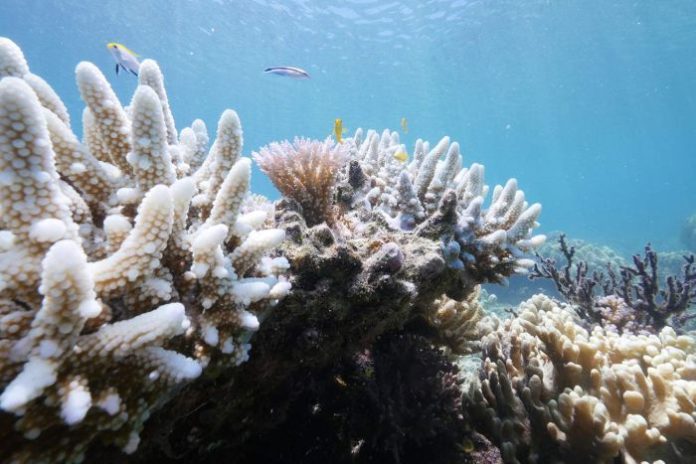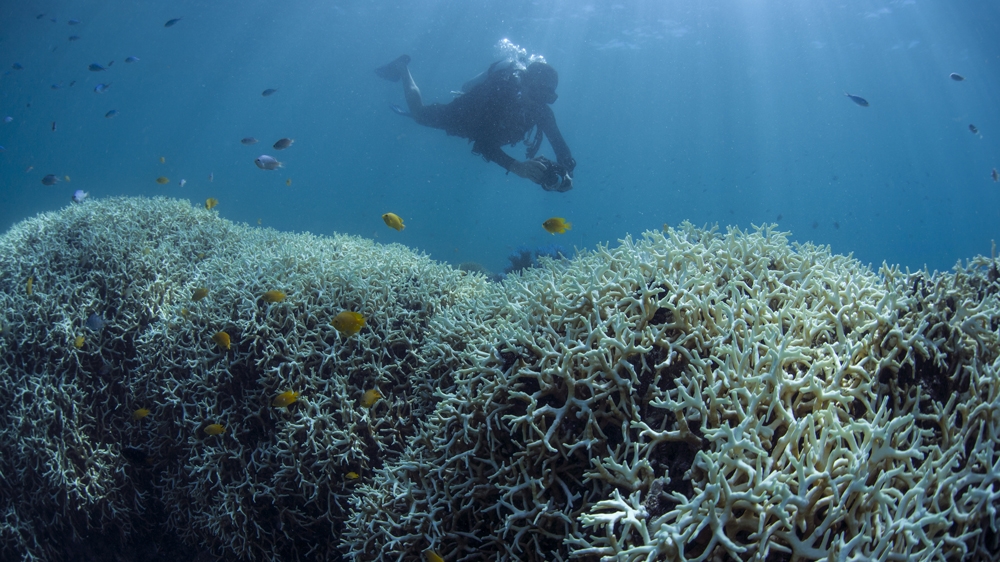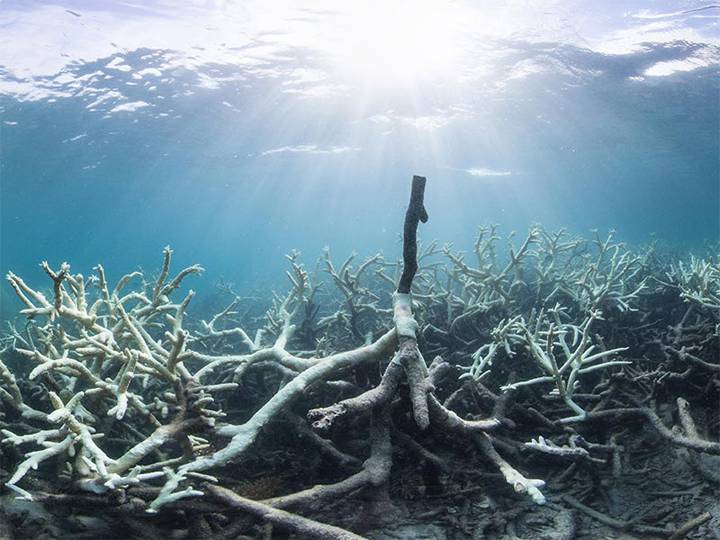
WWF-Australia has just released shocking videos and photos of coral bleaching on the Great Barrier Reef’s Lizard Island. The startling visuals prompted the Great Barrier Reef Marine Park Authority (GBRMPA) to raise the threat level of coral bleaching to a peak of three, triggering its highest level of response to “severe regional bleaching” in the 344,400 square kilometer Marine Park.
Russell Reichelt, chairman of the GBRMPA, blamed soaring temperatures for the reef’s bleaching crisis:
“The corals in the remote far north of the Reef experienced extremely hot and still conditions this summer, and were effectively bathed in warm water for months, creating heat stress that they could no longer cope with. The reefs that we’ve surveyed so far indicate the large low pressure system over the north last week simply arrived too late for some. A level three response level means we’re stepping up surveys in response to the coral mortality to help us better understand the effects of various pressures on the Reef and help guide management actions.
“The health and future of the Great Barrier Reef is a priority for us — bleaching reinforces the need for us to continue working with our partners to improve the Reef’s resilience to give it the best possible chance of dealing with climate change impacts. This means reducing nutrient and sediment loads in catchment run-off, continuing our program to control coral-eating crown of thorns starfish and being part of a global compact to reduce overall emissions.”
The Great Barrier Reef, a UNESCO World Heritage Site, is suffering from the worst coral bleaching event in at least 15 years. Queensland Greens Senator Larissa Waters told The Guardian, both the commonwealth and the state government were complicit in allowing the reef to be “used as a highway for coal and gas.”
“Increased monitoring is important but if we continue to open new coal mines the monitoring results will only get worse and worse. The old parties must break their addiction with fossil fuels and dirty donations in order to save the Great Barrier Reef and our very way of life. Scientists are clear – we can have coal or the reef.”
However, Australian Environment Minister Greg Hunt, before announcing plans for more monitoring and programs to tackle run-off pollution and crown-of-thorns starfish outbreaks, told reporters the bleaching he saw during an aerial survey was not as bad as first thought.
“It is not as severe at this stage as 1998 or 2002, which were both El Niño-related events. It is, however, in the northern parts, a cause for concern. The reef is 2,300 kilometers long and the bottom three-quarters is in strong condition but, as we head north, it becomes increasingly prone to bleaching. Essentially what you could see was patches of coral bleaching as you approached Lizard Island.”
Queensland’s Minister for Environment and Heritage Protection, and Minister for National Parks and the Great Barrier Reef Dr Steven Miles, criticized Hunt for ignoring the need for a credible federal government climate policy to address the cause of the bleaching.
“While it’s reassuring that the larger part of the reef is unaffected by this year’s global coral bleaching event, the widespread bleaching seen in the northern most parts of the reef is heart breaking. Being able to monitor the state of affected coral is important – Mr Hunt’s contribution on that front is welcome – but it is not enough. Where is his plan to reduce Australia’s greenhouse gas pollution? February sent records tumbling – the new hottest month on record after July 2015.”
Calls for climate action over coral bleaching on Great Barrier Reef https://t.co/vnGRXEtc5g pic.twitter.com/mSZ9U2Oy4M
— AFP news agency (@AFP) March 21, 2016
Nonetheless, Richard Leck, WWF spokesperson, is hopeful:
“The new video and stills are very concerning and show large sections of coral drained of all color and fighting for survival. This is the worst coral bleaching event ever to hit this most pristine part of the Great Barrier Reef. As the IPCC has stated coral bleaching is the most widespread and conspicuous impact of climate change.
“We can turn this around. The Reef can recover but we must speed up the shift to clean, renewable energy and we must build reef resilience by reducing runoff pollution from farms and land clearing. Australia must speed up the transition to clean energy – like solar and wind – by setting a target of 100% renewable electricity by 2035. And a legal cap on chemical pollution running into the Reef’s waters would build Reef resilience and help it survive while the world tackles climate change.”
This article (Dramatic Underwater Images Capture Dying Coral in Tte Great Barrier Reef) is a free and open source. You have permission to republish this article under a Creative Commons license with attribution to the author and AnonHQ.com.






